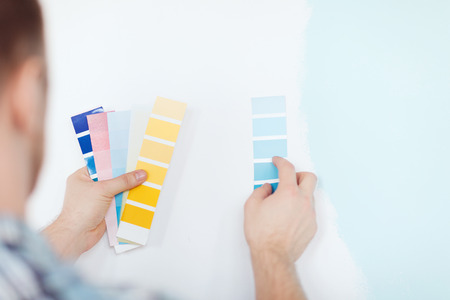Have you ever noticed that there are some rooms you walk into and immediately feel at ease, and some that put you on edge? You might’ve thought it was the décor, whoever was in the room, or even just how you woke up that day, but it was probably something else entirely—the color of the room.
Color is an unexpectedly powerful tool for influencing mood and emotion. Did you know that red, orange, and yellow are all colors that apparently stimulate appetite? That’s why those McDonald’s arches are golden—to get you to eat more of their food!
The power and psychology of color is important to keep in mind when creating an interior design scheme for your home, and for each individual room. Do you want your bedroom to make you feel the same as you do in the bathroom? Probably not. Let’s go over the basics of color psychology in the home, so you can take control of the atmosphere you want to create for yourself and any guests or buyers that might come through.

Color can heavily influence your state of mind.
Color is a means of expressing personality and controlling the tone of a space, which is why it’s so important for determining the style and mood of a room.
While different shades within a color palette can elicit different emotional responses based on the individual, core colors—red, blue, green, etc.—are generally received in the same way by most people. That’s how we end up with clichés like the “little black dress” paired with red lipstick, that make every woman look and feel mysterious and powerful.
Because it’s such an important factor in how a room makes you feel, you don’t want to choose a color for the walls based on fleeting trends in the interior design world. Color choice should be based on personal preference and association. If coral is the favorite color this spring in all the magazines, but all you can think of is your grouchy great-grandma’s salmon cardigan when you see it, don’t use it to keep your living room trendy. Use colors that are in sync with one another and with your personality.
The foundation of a room is its color.
There is authority in the color of a room. Take care to choose the right shade for the vibe you’re trying to create. Feel free to play around with different combinations through décor and furniture—although not so many it’s overwhelming—but know that paint color will ultimately decide the direction of the room.
Certain hues will deceive the eye into perceiving the room a certain way—namely when it comes to size. Light colors tend to make a room look bigger, brighter and more open. So, if your house is on the market and you’d like to make the guestroom look a little roomier to prospective buyers, you might want to paint it a pale shade, like a soft gray or even the lightest shade of pink. On the other hand, darker colors create a more intimate, sophisticated setting. If you’re trying to make your living room feel cozier, opt for a more saturated and darker hue.
Color is also integral in dictating the energy a space exudes. A lot of gyms paint their walls very vibrant, neon shades because they generate an intense and industrious atmosphere. Direct a room’s energy to be refreshing or comforting with pale, mellow shades, or infuse it with vitality and positivity using bright and dynamic hues.
Major colors and the mood they set.
We mentioned earlier that while different shades and tones of color can be subjective to the individual, many basic, fundamental colors induce a similar feeling in most people. We’ve highlighted a few of those colors, along with the effects most often associated with them, and included an idea of which rooms in your home might benefit from the ambiance they generate. This list is not just about paint colors either—consider these colors for your decor, art, wall coverings, window treatments, and accessories.
- Blue— calm, ambition, relaxed, open, trustworthy, strong; works well in the living room, bedroom or bathroom
- Green—positivity, nature, clarity, stability, joy, growth; works well in any room really, living room, kitchen, bedroom, etc.
- Purple—creativity, deep, compassion, luxurious, stimulates creativity; works well in the bedroom, living room, or office/studio space
- Yellow—happy, optimistic, inspiring, sunny, warmth, energizing; works well in the kitchen, dining room, or bathroom (be careful with yellow paint though as yellow toned walls do not photograph as well)
- Black—elegance, power, mystery, ambition, drama; best used as an accent rather than for an entire room, adds depth to a space
Those are just a few of the many examples available to demonstrate the power of color in the home.
If you’re trying to determine the best colors to use in selling your home and which rooms to focus on, Stage2Go can help. Give us a call or visit our website to look at the interior design packages we’ve already put together for you to make it easy to stage a room and build your color scheme around! We know when it comes to selling and staging your home you want affordable, convenient, and straightforward options—so we’ve got you covered!

Latest Comments